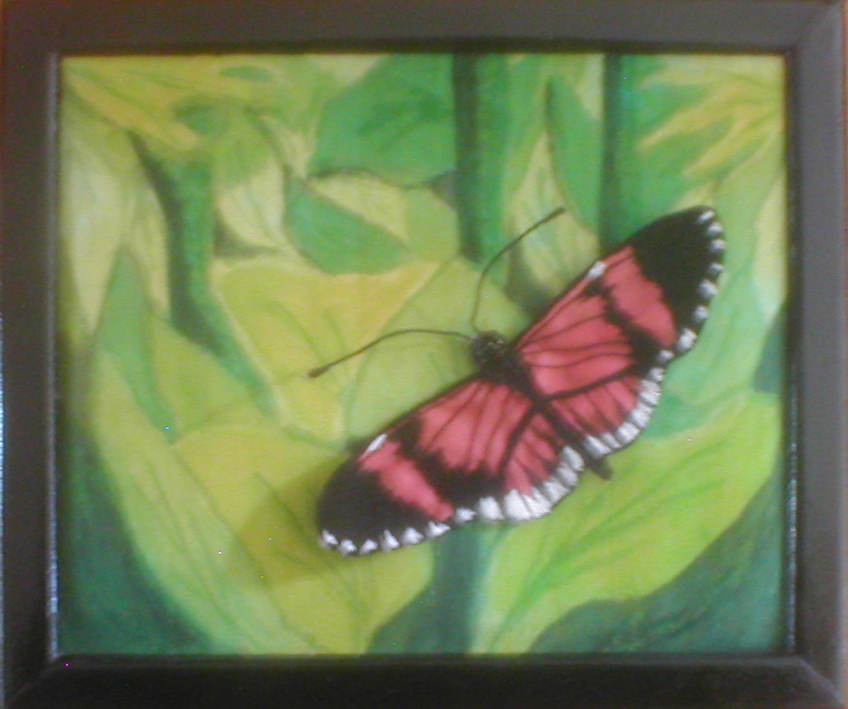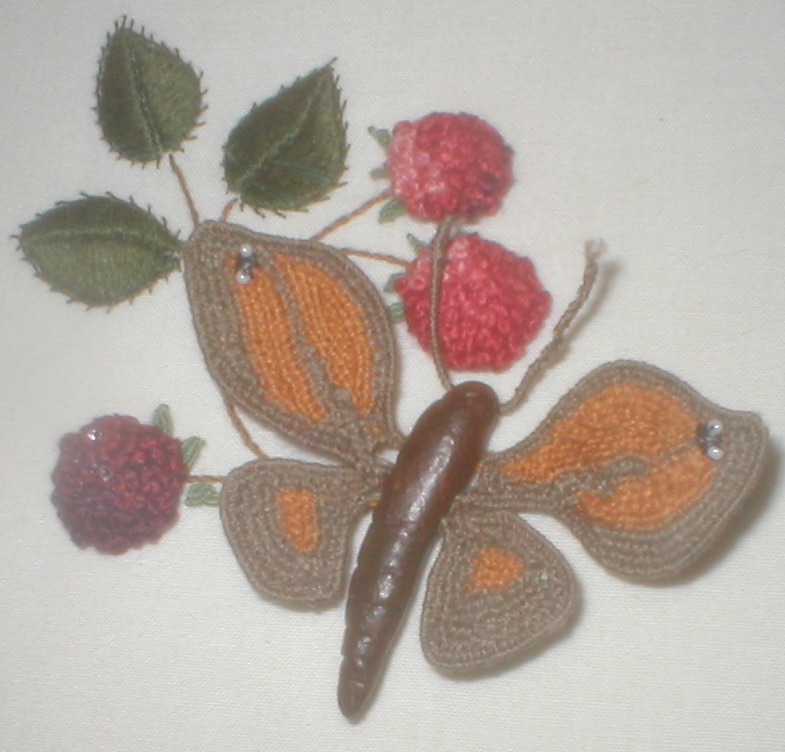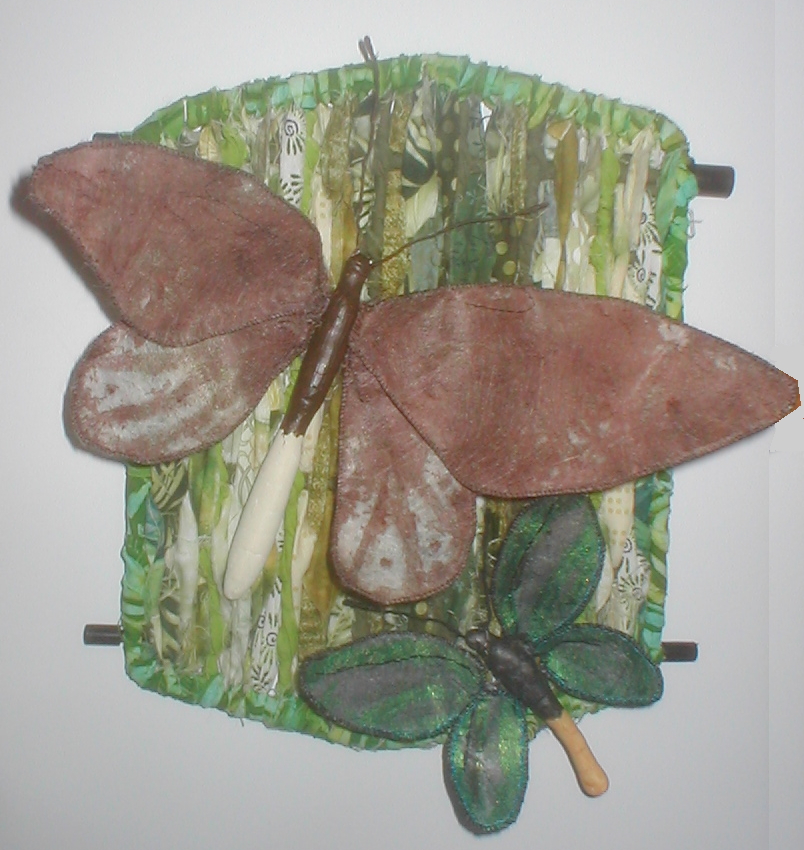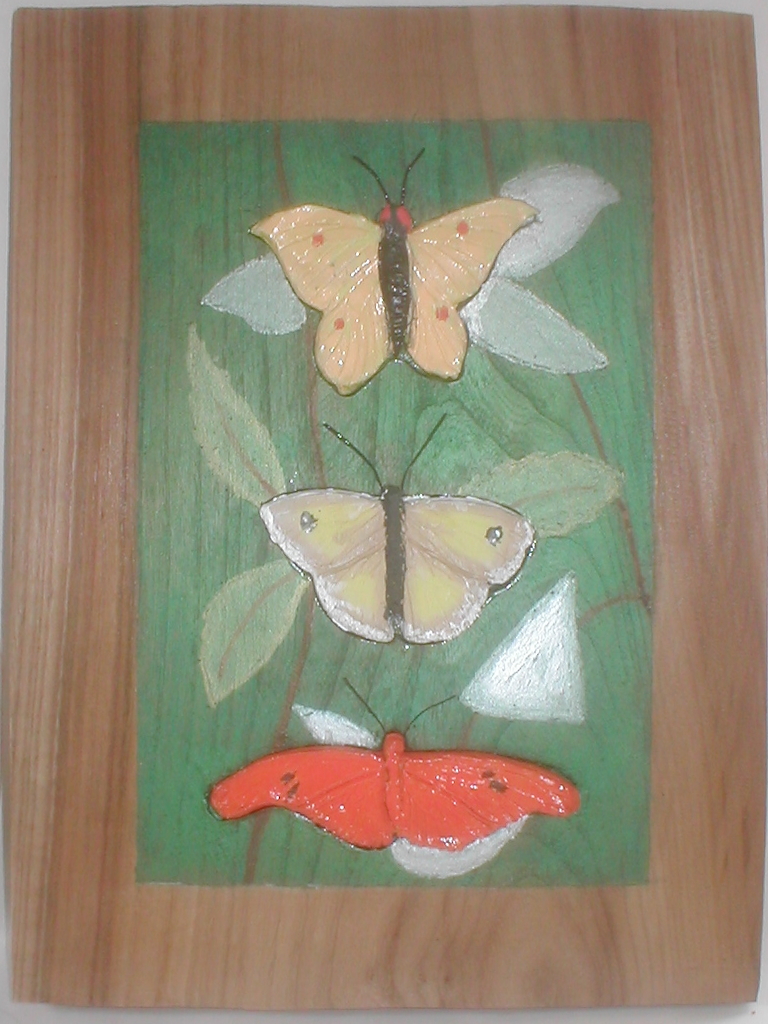I have made various pieces involving butterflies over the years. Some have been exhibited and so are found at Wall Butterflies and at Migrating Monarchs in the Diversity exhibition.

A subtropical butterfly found in Central America and the West Indies, where it lives in forest edges, especially the shadier parts. It is slow-flying, and its bright colours indicate to potential predators that it is poisonous; consequently it is mimicked by other species.
The butterfly is made from two layers of silk organza bonded together, red on top and white underneath, and embroidered with black and white silk thread. The edges of the wings are wired. The antennae are wire wrapped with black silk thread. The background is dyed and painted silk dupion.

This piece originated in 2012 at an Embroiderers' Guild workshop, making a stumpwork bramble. I added the butterfly afterwards. Gatekeepers are often found around brambles, which are their caterpillars' food plant.
The butterfly's body is made from an air-drying modelling material, the wings are needle-lace on a wire frame, with tiny beads for the eye-spots, and the antennae are wired.

A tropical butterfly found only in the rainforests of Papua New Guinea. It is the largest known butterfly, with the female (much bigger than the male) having a wingspan of up to 28cm.. The female is quite dull in colour; the male is much brighter.
The background of this piece is made from the door of an old cat-carrier (a particularly serendipitous piece of recycling) woven with strips of assorted green patchwork cottons. The butterfly bodies are made from air-drying modelling material, the wings from painted Lutradur with wired edges, and the antennae from thread-wrapped wire.

The butterflies were made at evening class, but much of the colouring is subsequent to firing. The antennae are painted wire. The mounting is part of piece of timber from Ickworth, which had a chalk mark suggesting it was elm. The colour effects are various bronze powders.